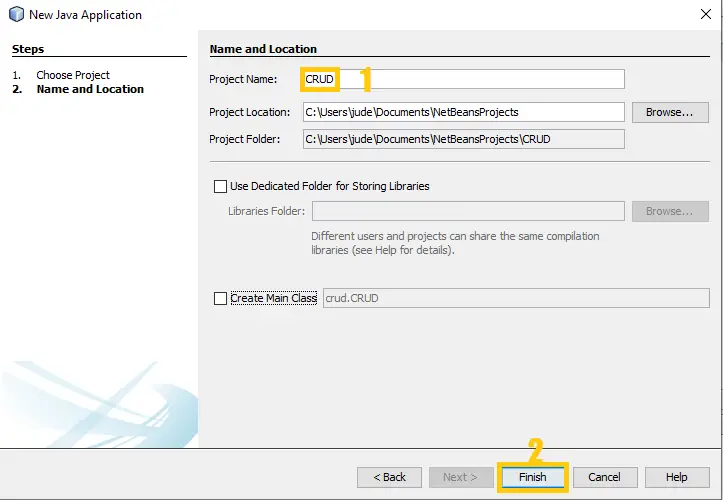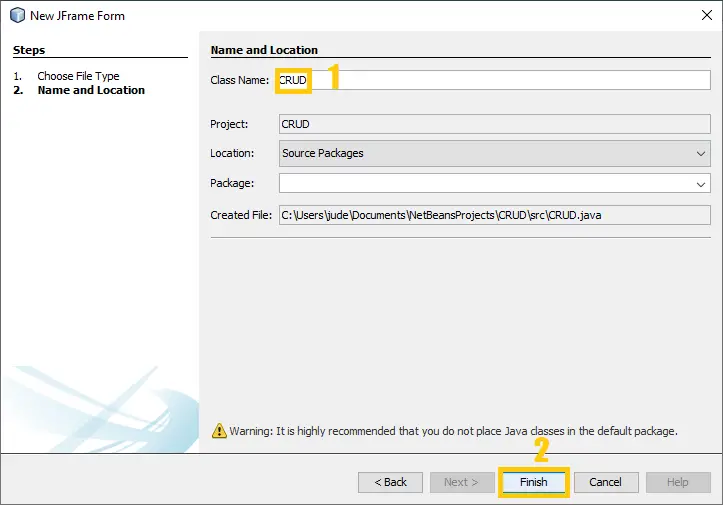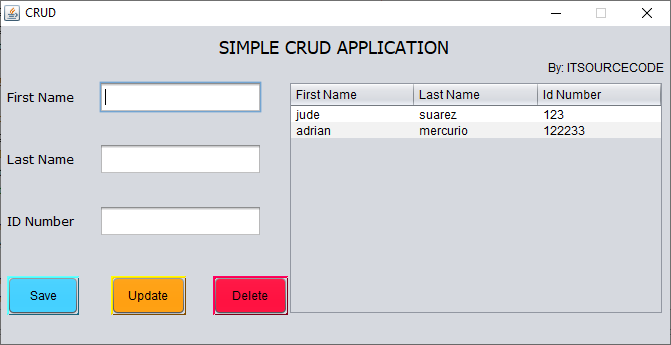The CRUD Operations In Java stand for Create, Read, Update, and Delete, and these are the most important parts of the system that you need to master when you are a beginner.
Data is stored in a database or on a computer’s hard drive using these four basic operations, also called (CRUD).

In addition to these articles, I will further discuss and provide more detailed explanations, as well as a sample code and complete source code which you can download and use as a guide to your learning process.
What are the basic CRUD operations and why are they important?
In Java, crud operation is an acronym that comes from the world of computer programming.
It stands for (create, read, update, and delete), which are the four basic functions that are needed for a persistent storage application to work on a system.
Furthermore, CRUD is really important because it’s commonly used in databases and database design cases. Without CRUD operations, software developers can’t make anything work and systems cannot work.
Most full-stack applications need to be able to create, read, update, and delete things in a web application or in a desktop application.
For example, if we don’t use CRUD activities when building a storefront, a blog post page, a to-do list, or a copy of a social media site, we’ll quickly get stuck.
About the CRUD Operations Project Information
| Project Name: | CRUD Operation |
| Language/s Used: | JAVA |
| Database: | MySQL |
| Type: | Desktop Application |
| Developer: | IT SOURCECODE |
| Updates: | 0 |
4 basic Crud operations
- Create: Using this operation, you can insert or create records into the database.
- Read: Using this operation, you can display data from the database.
- Update: Using this operation, you can change or modify data in a database.
- Delete: Using this operation, you can delete data from databases.
Without further ado, To start creating a CRUD operation, make sure that you have the NetBeans IDE installed on your computer.
This simple CRUD operation with source code is a simple project design in the Java Swing toolkit which provides a user interface and better and faster development for Java developers.
Then this project uses the MySQL database to use the four basic operations in Java, serving as a connection object and closing the connection via the MySQL connector.
The project aims to provide a guide to every IT student who is struggling and looking for the easiest way to solve their assignment or project in school. This serves as a primary key to success.
Also, this project can be upgraded, or shall we say, you can edit based on your needs without any problem from the developer of this project.
How to create simple CRUD operations?
Time needed: 5 minutes
This step is for creating a file on the NetBeans code editor.
- Step 1: Create a project.
First, open the file and then click “project” to create.

- Step 2: Create a project name.
Second, name your project.

- Step 3: Create JFrame.
Third, create a “JFrame” form.

- Step 4: Create a JFrame name.
Fourth, name your JFrame form.

- Step 5: Project Design.
Fifth, The actual design of the project.

- Step 6: Actual Coding.
You’re free to copy the code given below and paste it into your Java Swing design and create table users in the database.
The code given below is for the MySQL connection
This source code is a connection between the system and the database.
try {
Class.forName("com.mysql.jdbc.Driver");
String conURL = "jdbc:mysql://localhost/user1?" +
"user=root&password=";
java.sql.Connection con = DriverManager.getConnection(conURL);
} catch (SQLException x) {
x.printStackTrace();
} catch (ClassNotFoundException ex) {
Logger.getLogger(MainFrame.class.getName()).log(Level.SEVERE, null, ex);
}The code given below is for the CRUD operations adding new data
This source code allows you to add new data to the database.
String fname = txtFname.getText().trim();
String lname = txtLname.getText().trim();
String id = txtId.getText().trim();
if (!fname.isEmpty() && !lname.isEmpty() && !id.isEmpty()) {
try {
Class.forName("com.mysql.jdbc.Driver");
con = DriverManager.getConnection("jdbc:mysql://localhost:3306/user1", "root", "");
String sql = "select * from student where id_number='" + id + "'";
st = con.createStatement();
ResultSet rs = st.executeQuery(sql);
if (!rs.first()) {
saveUser(fname, lname, id);
DefaultTableModel model = (DefaultTableModel) tblStudents.getModel();
Object[] row = new Object[4];
row[0] = fname;
row[1] = lname;
row[2] = id;
model.addRow(row);
} else {
alert("Please provide a different id number", "Similar id found");
}
clear();
} catch (SQLException | ClassNotFoundException ex) {
Logger.getLogger(Crud.class.getName()).log(Level.SEVERE, null, ex);
} finally {
try {
con.close();
st.close();
} catch (SQLException ex) {
Logger.getLogger(Crud.class.getName()).log(Level.SEVERE, null, ex);
}
}
} // else if (!id.matches("^[0-9]{8}$")) {
// alert("please provide a valid id number", "Wrong id");
// }
else {
alert("please fill in all the details");
}
}The code given below is for the Update operation
This source code is for updating data from the database.
String fname = txtFname.getText().trim();
String lname = txtLname.getText().trim();
String id = txtId.getText().trim();
if (!fname.isEmpty() && !lname.isEmpty() && !id.isEmpty()) {
try {
Class.forName("com.mysql.jdbc.Driver");
con = DriverManager.getConnection("jdbc:mysql://localhost:3306/user1", "root", "");
String sql = "select * from student where id_number='" + id + "'";
st = con.createStatement();
ResultSet rs = st.executeQuery(sql);
if (rs.first()) {
update(fname, lname, id);
DefaultTableModel model = (DefaultTableModel) tblStudents.getModel();
model.setRowCount(0);
fetch();
alert("Update was successful");
} else {
alert("There is no such student", "Update error");
clear();
}
} catch (ClassNotFoundException | SQLException ex) {
Logger.getLogger(Crud.class.getName()).log(Level.SEVERE, null, ex);
}
} else {
alert("There is nothing to update :(", "No row selected");
}
}The code given below is for the Delete operations
This source code is for deleting data from the database.
int i = tblStudents.getSelectedRow();
if (i >= 0) {
int option = JOptionPane.showConfirmDialog(rootPane,
"Are you sure you want to Delete?", "Delete confirmation", JOptionPane.YES_NO_OPTION);
if (option == 0) {
TableModel model = tblStudents.getModel();
String id = model.getValueAt(i, 2).toString();
if (tblStudents.getSelectedRows().length == 1) {
delete(id);
DefaultTableModel model1 = (DefaultTableModel) tblStudents.getModel();
model1.setRowCount(0);
fetch();
clear();
}
}
} else {
alert("Please select a row to delete");
}Downloadable Source Code Below
Summary
This article is a way to enhance and develop our skills and logic ideas, which is important in practicing the Java programming language, which is the most well-known and most usable programming language in many companies.
Related article below
- CRUD Operations In PHP With Source Code (Complete Guide)
- CRUD Operations In Python With Source Code
- Crud Operation in Nodejs and MySQL with Source Code
- CRUD Operation in ASP NET MVC With Source Code
Inquiries
If you have any questions or suggestions about CRUD Operations, please feel free to leave a comment below.






